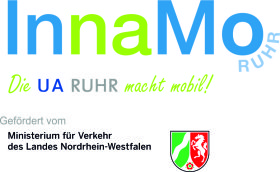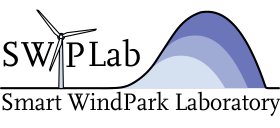Current Projects
- EMSiQ - Cross-sector energy management in smart existing residential neighbourhoods
- HEAP - Holistic optimization of electric power trains in pump applications
- WINDegration – Control and management of wind farms for the integration in grids with low inertia under consideration of the interactions between the individual power plants
- Erasmus+ BUILD2050 - Training for Sustainable and Healthy Building for 2050
- inVETra - Smart connecting elements in wind turbine supporting structures and drive train
- InnaMoRuhr - Concept of integrated, sustainable mobility for the University Alliance Ruhr
- Membership in the competence center hydraulic machinery of the Ruhr-University Bochum
- High-precision current sensor with a novel modulation method
- TSAESA - HIL-Testsystem für SPS-Steuerungssysteme
EMSiQ - Cross-sector energy management in smart existing residential neighbourhood
The EMSiQ project demonstrates the retrofitting of existing residential neighbourhoods with a sustainable, decentralised supply infrastructure for electrical energy and heat. A combination of renewable energy systems and storage units is integrated into the neighbourhood as a micro power-heat grid and managed and controlled by a sensor-minimised, scalable, adaptive neighbourhood energy management system (QEMS).
By utilising the degrees of freedom of sector coupling on site, which takes into account not only electricity and heat but also electromobility, and making demand more flexible, the QEMS ensures that energy flows are optimised throughout the neighbourhood, ultimately increasing efficiency. At the same time, the comfort of the residents is increased and CO2 emissions are minimised. The aggregation of power from the supply and storage systems as well as flexibility in the neighbourhood will enable grid-friendly behaviour on the one hand. On the other hand, the neighbourhood will be able to actively offer grid-supporting services or participate in a virtual power plant, creating new business models. A digital twin of the neighbourhood and the new energy system is being developed to support energy management and greatly reduce the need for sensors. The demonstration will take place in a residential neighbourhood in Bochum that is currently equipped with gas central heating and was built in the 1950s.
The joint project is funded by the Federal Ministry for Economic Affairs and Climate Action (BMWK) as part of the 8th Energy Research Programme. The Ruhr University Bochum with the Institute of Power Systems Technology and Power Mechatronics (coordinator) and the Chair of Computing in Engineering and Vonovia SE form the project consortium.
Project website: EMSiQ
Contact: Dr.-Ing. Philipp Spichartz
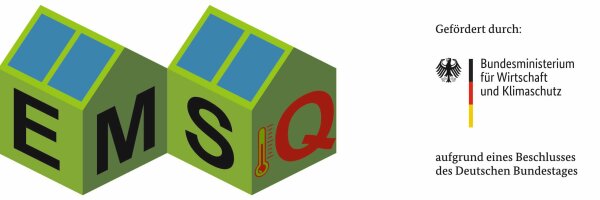
HEAP - Holistic optimization of electric power trains in pump applications
Due to the increasing energy demand as well as the higher relevance of increased efficiency of electric drives to reduce the global CO2 emissions, the development of optimized drive trains in all industrial sectors becomes more important. Here it is crucial that not only the individual components of a system are optimized, but also a holistic system view is carried out. Based on this it is the best way to develop a system, which represents the overall optimum in terms of efficiency, costs as well as the resource demands.
HEAP considers the development of a simulation tool for the holistic optimization of electric powertrains in pump applications for a wide power spectrum. With the help of automatic variations of specific selected parameters, a technical as well as an economical evaluation of the electrical drive train can be achieved. The simulation tool sould be modular in order to allow the simplest possible integration of subsystems. As a further advantage the quick integration of new technologies can be achieved, so that product innovations are quickly and targeted paossible.
The goal of the development of such a simulation tool is, that possible energy optimisations can be examined. This results in an easier contorl oft he adjustment of individual components fort he development, whereby the effects on the overall system in terms of efficiency, manufacturing and operating costs can be made visible.
In a first konservative estimation a reduction of 7.5 TWh or 4 billion t of CO2 can be achieved in medium term with the help oft he results from this project.
The project is funded as a part oft he 7th Energy Research Program of the Federal Ministry for Economic Affairs and Energy (funding no. 03EN2019B). The project partners are WILO SE and the FH Münster. The planned end oft he project ist he end of April 2024.

WINDegration - Control and management of wind farms for the integration in grids with low inertia under consideration of the interactions between the individual power plants
A fast and extensive shift towards renewable energy sources- the target to achieve a decarbonized electric energy supply that is independent from fossil fuels is clearly defined. Onshore and offshore wind farms play a central role among these renewable energy sources. However, it becomes increasingly clear that their initial grid integration approach severely affects the network’s stability. Conventional power plants so far ensured stability through their inertial mass and respective control strategies to support grid frequency and voltage. The gradual decommissioning of these central power plants and their replacement with various decentral photovoltaic systems and wind farms motivate the requirements on wind farms to also fulfill ancillary grid services.
Control mechanisms for the power converters of the generator system allow an inertia emulation that utilizes the kinetic energy of the mechanical drive train of the wind turbines as well as a precise reactive power supply for a voltage support and a deloaded operation to provide power reserves to balance temporary generation to load deviations. These grid support measures inevitably have an impact on the operational behavior. On the one hand, additional loads in the drive train affect the estimated lifetime of specific drive train components, whereas increased wakes caused by the wind rotor on the other hand reduce the available power of downstream positioned wind turbines. As a result, increasing the infeed for frequency support may cause unintended power drops in other turbines positioned downstream.
To cope with these complex interconnections, in the project WINDegration a global optimization of the wind farm operation is targeted. Main goals are firstly to achieve a maximum energy yield during normal operation with a provision of the required power reserve, and secondly in case of a grid event to provide a dynamic, precise and reliable grid frequency and voltage support. Results extracted from simulation studies are validated in a second step with experimental investigations using the wind farm laboratory SWiPLab.
The project with a duration of three years is funded by the Deutsche Forschungsgemeinschaft (DFG, German Research Foundation) under project number 501898183.

Erasmus+ BUILD2050 - Training for Sustainable and Healthy Building for 2050
At the heart of BUILD2050 lies a dedication to fostering interdisciplinary learning and innovation in the building sector. By developing new, continuously updated courses with a pan-European scope, BUILD2050 seeks to equip professionals in the construction sector with the skills and knowledge necessary to lead the industry towards a sustainable and regenerative future. The initiative not only emphasises the importance of nearly zero-carbon buildings but also champions the enhancement of health and well-being for occupants, alongside a positive contribution to the natural environment. The main objetive of the BUILD2050 project is to contribute to the improvement of construction, renovation and operation of healthy and sustainable buildings at European level through the development of an integrated and transnational training.
The specific objectives are:
(1) Create transversal skills in the building sector knowledge for emerging challenges through an integrated training composed of 8 courses aimed at students and professionals;
(2) Foster the sharing of innovative knowledge and challenges through the creation of a network of European partners in the building sector(entrepreneurs, researchers, municipalities);
(3) Promote the response to the challenges in building sector through the creation of a platform with the compilation of the information generated in the training by the trainers, trainees and associated partners;
(4) Promote new forms of education through the sharing of experience / methodology of creating integrated and transnational training through a European Guide on Advanced Training for Build2050
The joint project is funded by the European Union's Erasmus+ programme. The Ruhr University Bochum with the Institute of Power Systems Technology and Power Mechatronics is part of the project consortium that includes six universities from five European countries.
Project website: BUILD2050
Contact: Pavlos Tourou
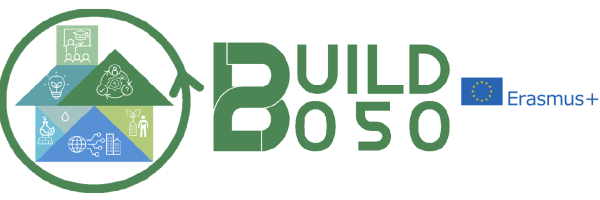
Smart connecting elements in wind turbine supporting structures and drive train
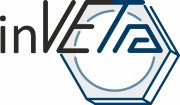
In the joint project inVETra, an innovative Condition Monitoring System (CMS) based on a novel sensory system will be developed for its application in wind turbines. The key innovation lies in the development of sensory bolt with a dedicated high-dynamic and adaptive CMS. Those sensory bolts are standardized bolts equipped with signal conversion and processing electronics.
As a fundamental connecting element, sensory bolts will be integrated in supporting structures as well as in the mechanical drive train of wind turbines. At specific optimal locations, regular bolted connections are substitute by sensory ones. They provide high-resolution measurements of structural loads and allows monitoring of the bolted connections. By using the CMS, which is specifically designed for the novel sensor system, detailed information about resulting structural loads are determined and reconstructed, so that condition of critical supporting structures and drive train components can be monitored.
A dynamic model of the entire wind turbine will be continually updated and adapted based on measured or determined state variables. For this purpose, high-dynamic and adaptive model and observer structures are applied to determine emerging structural loads based on high-resolution data from the smart connecting elements. The impact of wind and power grid conditions are considered. The adaptive model and observer structures of the CMS feature early fault detection and estimation of remaining lifetime of the plant and components. The use of sensory bolts together with a highly adaptive and holistic CMS aims to achieve an extended, low-maintenance and more cost-efficient plant operation. In the scope of this sub-project, the innovative CMS will be designed, implemented, and validated in laboratory-scale experiments.
The joint project is supported by the Federal Ministry for Economic Affairs and Climate Action (funding no. 03EE3042).
 Project website: inVETra
Project website: inVETra
Concept of integrated, sustainable mobility for the University Alliance Ruhr
In a multidisciplinary consortium of social sciences, economics and engineering, researchers from the three Ruhr Universities are investigating the question of how mobility in the Ruhr Area can be made sustainable. The project will develop a concept of integrated, sustainable mobility for the University Alliance Ruhr and test it in a field study.
The aim is to improve the transport links between the four locations of the University Alliance Ruhr (UA Ruhr), Duisburg, Essen, Bochum and Dortmund, to close gaps in the range of services on offer and thus bring about a lasting change in the mobility behaviour of students and employees.
The plan is to survey mobility requirements and develop scenarios which will be tested in a simulator and finally tested in real life. For this purpose, locally emission-free technologies, e.g. electric shuttles, but also on-demand services and other forms of new mobility will be used.
Contact: Dr.-Ing. Philipp Spichartz

KoMoM entwickelt Konzepte zur sicheren Inbetriebnahme, erweiterten Nutzung und umfassenden Überwachung modularer Hochspannungs-Mehrpunktstromrichter z.B. für ein Multiterminal-DC-Transportnetz. Dazu werden innovative Mess-, Analyse- und Regelungsverfahren mit moderner Rechnertechnik, leistungsfähigen programmierbaren Logikbausteinen und neuesten Zeitreihenmodellen verknüpft. Messungen unter Einbeziehung eines vorhandenen, derzeit einzigartigen, Multiterminal-DC-Transportnetz-Versuchsstandes dienen der Verifikation. Der Versuchsstand besteht aus vier Mehrpunktstromrichtern auf Basis von Vollbrückenmodulen in den Stromrichterzweigen und beherrscht DC-Kurzschlüsse im geregelten Betrieb. Er entstammt einem Projekt mit der Firma Amprion und emuliert die erste im Netzentwicklungsplan vorgesehene Hochspannungs-Gleichstrom-Übertragungsstrecke (HGÜ) „Ultranet“ (Amprion, TransnetBW).
Kurzschlussbeherrschung und -abschaltung im geregelten Betrieb erfordern hochgenaue DC-fähige Strommesstechnik auf Höchstspannungsniveau. Mess- und Regelungskonzepte hierfür werden im Projekt erarbeitet bzw. adaptiert.
Dynamische Wirk- und Blindleistungsstellung sowie Oberschwingungskompensation sind höchst relevante Netzdienstleistungen. Realisierungskonzepte, Möglichkeiten und Grenzen werden erarbeitet und erforscht. Auch die Interaktion von Stromrichtern und deren Regelung ist für stabilen Betrieb entscheidend. Das Projekt erarbeitet Beschreibungen für Stromrichter in unterschiedlichen Spannungsebenen, kombiniert diese mit einer geeigneten stromrichternahen Regelung und einer Anlagencharakteristik und leitet daraus Möglichkeiten und Grenzen des Zusammenspiels von Stromrichtern im Netz ab.
Die komplexe Stromrichtertopologie und die herausfordernde Mess- und Regelungstechnik stellen höchste Anforderungen an Inbetriebnahmekonzepte – heutige Methoden sind nicht wirtschaftlich und risikoreich. Erweiterte, spezielle Hardware-In-The-Loop (HIL)-Verfahren zur Vorabverifikation werden erarbeitet.
Die Komplexität drückt sich auch in einer Vielzahl von Messgrößen aus: An realen Anlagen fallen mehrere tausend Messdaten mehrere hundert Mal pro Sekunde an und sind zu bewerten. Dieses „Big Data“-Problem wird mit Blick auf Zustandsmonitoring und Ereignisarchivierung durch eine neuartige Ausrichtung aktueller Methoden der Zeitreihenanalyse angegangen.
Projektabschluss: 09/2020
Weitere Informationen
Ansprechpartner: M.Sc. Thomas Stoetzel
Kontakt: office@enesys.rub.de
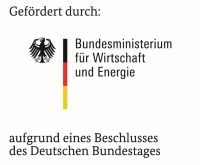
Smart Windpark Laboratory

With the Paris Agreement in 2015, the German Federal Government has acknowledged the global challenges of climate change and made the commitment to contribute to an environment-friendly electricity supply by decarbonization. A sustainable solution can only be achieved by utilizing renewable energy sources. Due to the technological advances, wind power plants are one of the promising technologies to deal with the social challenges of climate change and contribute to a secure and reliably energy supply.
Under the supervision of Prof. Dr.-Ing. Constantinos Sourkounis, in this project the first stage of the research infrastructure “Smart Windpark Laboratory” (SWiPLab) will be conceptualized, build up and validated with the main objective to allow new investigation opportunities for an implementation-oriented research in the field of wind energy.
More information
This project is funded by the European Union and the German state of North Rhine-Westphalia in the frame of the funding competition “Forschungsinfrastrukturen” using funds from the European Regional Development Fund (ERDF) 2014-2020 “Investment in growth and employment”.
Mail contact: office@enesys.rub.de
Membership in the competence center for hydraulic machinery of the Ruhr-University Bochum
The Institute for Energy Systems and Power Mechatronics is a member of the competence center hydraulic machinery, a research network of the Ruhr-University Bochum. As part of this membership, EneSys is doing research with the drive system and the control of hydraulic machinery.
The operation of pumps is characterized by sophisticated thermal and chemical environments. This concerns the pumped medium because this can have a temperature above 100 ° C and aggressive chemical substances, on the other hand, the environmental conditions of the installation are often out of spec. Nevertheless, a reliable and efficient operation must be guaranteed. In addition to the efficiency further boundary conditions have to be considered as a low-noise operation and extreme demands on the part of the supply mains. Among these, dynamically changing, conditions the design and interpretation of an efficient and cost-effective drive unit a technical challenge.
The general research in the field of drive technology for pump is driven by the optimization of the subsystems in the static nominal operating ranges. The optimization refers not only to increase efficiency but reflects the tension between efficiency, reliability and cost, which includes aspects such as manufacturability, reduction of required sensors etc..
As part of the KHS an integrated research approach is followed. The optimization and increased efficiency of the overall system is paramount. These subsystems are optimized to account for interactions with each other in the overall system and respect to the overall objectives. The overall objectives are optimized.
In the project plan optimization potential in the area of the drive system are explored. They are over the entire operating range, in particular also the partial load operation is identified. Approaches to achieve a cost-optimal utilization of these potentials in compliance with the above requirements, yet safe operation under unsafe conditions.
Contact: Prof. Dr.-Ing. Sourkounis
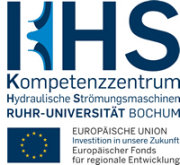

High-precision current sensor with a novel modulation method
The focus of this project is to develop a highly accurate current sensor with a novel modulation method. The ASIC 'IHM-A-1500'will be used as the measurement unit from the Company Isabellenhütte. This chip uses the measured voltage drop over a shunt for the current measurement. The resolution of the measured current is 16 bits. This 16-bit value is coded by means of a modulation unit into a special PWM signal, where the pulse width and the period are variable. The method for encoding the signal is called as F-PWM. Because of the simple digitization of the measured signal, it can be demodulated with each microcontroller-based measurement unit.
Contact: Dr.-Ing. Abdoulkarim Bouabana
TSAESA - HIL-Testsystem für SPS-Steuerungssysteme
Das Projekt hat das Ziel, Inbetriebnahmen von SPS-gesteuerten Industrieanlagen zu optimieren. Im Rahmen des Projektes wird eine Software zur Hardware-in-the-loop-Prüfung von SPS-Steuerungssystemen entwickelt. Die zu steuernde Anlage wird in einer Simulationsumgebung nachgebildet und mit dem zu prüfenden SPS-System verbunden. So kann das SPS-System auf korrekte Funktionalität geprüft werden schon bevor die Anlage fertig gestellt ist. Es können gezielt Sicherheitsfunktionen getestet und evaluiert werden, die sonst eine Schädigung oder Zerstörung der Anlage zur Folge hätten. Dies spart Zeit und Kosten für die Inbetriebnahme, außerdem ist die Fehlersuche und –behebung leicht durchzuführen. Das Simulationssystem ist frei konfigurierbar und kann so an andere Anlagentypen angepasst werden. Das Projekt erlaubt eine kosteneffiziente und schnelle Inbetriebnahme von SPS-gesteuerten Anlagen.
Contact: Prof. Dr.-Ing. Sourkounis




